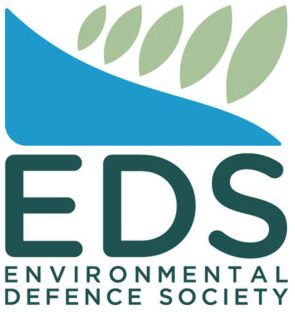Māui And Hector’s Dolphin Threat Management Plan Unlawful, Unacceptable, Immoral: Dolphin Defenders
Māui and Hector’s Dolphin Defenders is the only charity dedicated to the preservation, protection and recovery of New Zealand’s endemic dolphins. Formally established in 2012 but operating for around 25 years, the group’s members have been involved in the development of every Māui and Hector’s dolphins Threat Management Plan (TMP).
“Māui and Hector's Dolphin Defenders commend the Environmental Law Initiative on its Judicial Review of the 2020 Māui and Hector's dolphins Threat Management Plan announced today (10 April) because the Government’s decisions were unlawful. Decision makers put the anecdotal and speculative views of the fishing industry before their legal obligations to protect Māui and Hector’s dolphins. These decisions were also unacceptable, and immoral.”
Dolphin Defenders founder and Chair, Christine Rose, says, “We know every TMP has failed to do its job, to actually manage the threats to Māui and Hector’s dolphins, because they are still being wiped out by the fishing industry.”
The Department of Conservation Incident Database shows at least 26 Hector’s dolphins killed by trawl and set nets since the adoption of the last TMP. Though Rose says this figure is probably higher because cameras on boats were only rolled out in 2023, not all boats have cameras, and not all footage is reviewed.
“These dolphin deaths were avoidable, but with the TMP they were inevitable, because decision makers handed the solutions to bycatch problems to the fishing industry, which caused them. The TMP allows trawl and set nets, proven to kill, within the dolphins’ range, causing suffering, deaths, and decimation of dolphins”, says Mrs Rose. “The Government played the industry hand in a mortal game where the dolphins were the losers.”
Māui and Hector’s Dolphin Defenders made submissions and provided briefings to Ministers in the development of the TMP. “We used expert advice to point out that the industry proposals would lead to more dolphin deaths. The industry recommended fishing methods - low headline heights and slow trawl speeds, which were adopted by the Government and included in the TMP. These allow trawling to continue just hundreds of metres from shore - key Hector’s habitat -and have been involved in at least half the subsequent fishing-related deaths. The industry’s ‘solutions’ kill Hector’s dolphins”.
“It’s even worse, that in at least four cases, fishing boats that have killed Hector’s dolphins have gone back out and killed more.”
The deaths of a heavily pregnant female and her female, unborn calf, along with another female, in Kaikoura, and two dolphins off Otago from a population of only 41, plus the eight killed off Timaru, and all the other deaths in the time of this TMP, are a direct result of Ministerial weakness and regulatory capture where the industry wrote the rules and the Government adopted them.
When the fishing industry kills female dolphins it amplifies the death knell which rings for the whole species, because it takes out present, and future generations. These impacts were not taken into account in the development of the TMP and the setting of Fishing Related Mortality Limits, says Mrs Rose.
That unhealthy neglect of obligations to dolphin sustainability continues apace, with the delay of the Hector’s dolphin Bycatch Reduction Plan Annual Report, years overdue. The present Minister, Shane Jones reckons there are no such thing as Māui dolphins, a line parrotted by the industry. Meanwhile Jones is working on weakening the Fisheries Act based on recommendations from the Seafood Industry Forum.
Rose says, “Nothing but exclusion of indiscriminate fishing methods in dolphin habitat will stop dolphins needlessly being killed, and save subpopulations and the wider species from extinction”.


 Gordon Campbell: On Marketing The Military Threat Posed By China
Gordon Campbell: On Marketing The Military Threat Posed By China RNZ Online: How The World Reacted To The Demise Of The Treaty Principles Bill
RNZ Online: How The World Reacted To The Demise Of The Treaty Principles Bill Te Matapihi: Response To Govt’s New Strategic Housing Partnerships: Progress, But Equity Gaps Remain
Te Matapihi: Response To Govt’s New Strategic Housing Partnerships: Progress, But Equity Gaps Remain Banking Class Action: Government’s Retrospective Law Change Threatens Consumer Protections
Banking Class Action: Government’s Retrospective Law Change Threatens Consumer Protections E tū: Journalists Respond To Grenon - Still No Commitment To Editorial Independence
E tū: Journalists Respond To Grenon - Still No Commitment To Editorial Independence Marlborough District Council: Kevin Judd Named Marlborough’s Newest Living Cultural Treasure
Marlborough District Council: Kevin Judd Named Marlborough’s Newest Living Cultural Treasure Parliamentary Commissioner For The Environment: Are We Planting The Forests We Need?
Parliamentary Commissioner For The Environment: Are We Planting The Forests We Need?


